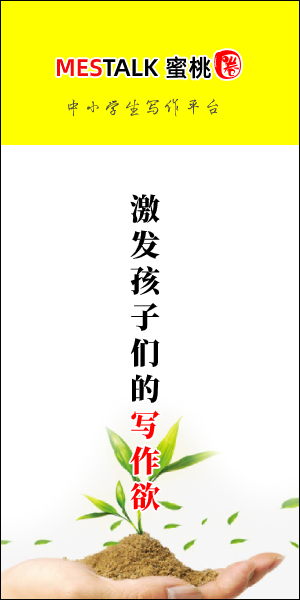块茎(英语:stem tuber)及块根(英语:root tuber)均为部分植物物种借助其构造上膨大了的部分而形成的营养素贮藏器官。这些构造存在于多年生植物,用以在其越过冬季或旱季(多年化(英语:Perennation))之时,得以保留至下一生长季度时为植物的重新生长提供营养及能量,更可用于无性生殖。块茎(英语:stem tuber)由变粗了的根茎(rhizomes,根状膨胀地下茎)或匍匐茎(英语:stolon)形成,常见的物种有马铃薯及山药等。部分文献亦将块根(英语:root tuber)包括在内,即外形类似块茎的膨胀侧根,例如:红薯、木薯及大丽菊;其他的或只包括块茎。
块茎(英语:stem tuber)是多年生植物的根状膨胀地下茎或匍匐茎(英语:stolon)的一种,其节眼上长出不定根(植物底部)和芽(朝上位置),位于母株的两旁、靠近泥土表面的位置。地下块茎的寿命一般都比较短促,仅足以维持新芽成长成为新的植株。
可见于姜、芋、藕、山药、马铃薯等。
块茎和块根都属植物保存营养或水分用的储藏器官(英语:storage organ),有多年化(英语:Perennation)(过冬耐旱)、无性生殖等作用。
The offspring or new tubers are attached to a parent tuber or form at the end of a hypogeogenous (initiated below ground) rhizome. In the autumn the plant dies, except for the new offspring stem tubers which have one dominant bud, which in spring regrows a new shoot producing stems and leaves, in summer the tubers decay and new tubers begin to grow. Some plants also form smaller tubers and/or tubercule(英语:tubercule)s which act like seeds, producing small plants that resemble (in morphology and size) seedlings. Some stem tubers are long-lived, such as those of tuberous 秋海棠属, but many plants have tubers that survive only until the plants have fully leafed out, at which point the tuber is reduced to a shriveled-up husk.
块茎通常开始于幼苗下胚轴部分的扩大,但有时也包括上胚轴(英语:epicotyl)的第一或两个节及根的上部。块茎具有垂直方向,顶部有一个或几个营养芽,底部由基部产生,根部有纤维状根,而块茎通常呈长圆形。
Tuberous begonia, yams(英语:Yam (vegetable)), and Cyclamen are commonly grown stem tubers. Mignonette vine () produces aerial stem tubers on 12至25-英尺-tall(3.7至7.6-米) vines, the tubers fall to the ground and grow. of the mint family 唇形科, produces tuberous under ground organs from the base of the stem, weighing up to 1.8 kg per tuber, forming from axillary buds producing short stolons that grow into tubers. Even though 荚果 are not commonly associated with forming stem tubers, is an example native to Asia and Europe, where it was once even grown as a crop.
我们日常食用的马铃薯为其植株的块茎。其匍匐茎(英语:stolon)膨胀变厚,发展成为贮藏器官
The tuber has all the parts of a normal stem, including nodes and internodes. The nodes are the eyes and each has a leaf scar. The nodes or eyes are arranged around the tuber in a spiral fashion beginning on the end opposite the attachment point to the stolon. The terminal bud is produced at the farthest point away from the stolon attachment and tubers thus show the same 顶端优势 as a normal stem. Internally, a tuber is filled with starch stored in enlarged 薄壁组织 like cells. The inside of a tuber has the typical cell structures of any stem, including a pith, vascular zones, and a cortex.
The tuber is produced in one growing season and used to perennate the plant and as a means of propagation(英语:Plant propagation). When fall comes, the above-ground structure of the plant dies, but the tubers survive over winter underground until spring, when they regenerate new shoots that use the stored food in the tuber to grow. As the main shoot develops from the tuber, the base of the shoot close to the tuber produces adventitious roots and lateral buds on the shoot. The shoot also produces stolons that are long etiolated stems. The stolon elongates during long days with the presence of high 生长素 levels that prevent root growth off of the stolon. Before new tuber formation begins, the stolon must be a certain age. The enzyme lipoxygenase makes a hormone, jasmonic acid(英语:jasmonic acid), which is involved in the control of potato tuber development.
The stolons are easily recognized when potato plants are grown from seeds. As the plants grow, stolons are produced around the soil surface from the nodes. The tubers form close to the soil surface and sometimes even on top of the ground. When potatoes are cultivated, the tubers are cut into pieces and planted much deeper into the soil. Planting the pieces deeper creates more area for the plants to generate the tubers and their size increases. The pieces sprout shoots that grow to the surface. These shoots are rhizome-like and generate short stolons from the nodes while in the ground. When the shoots reach the soil surface, they produce roots and shoots that grow into the green plant.
A tuberous root or storage root, is a modified lateral root, enlarged to function as a 贮藏器官. The enlarged area of the root-tuber, or storage root, can be produced at the end or middle of a root or involve the entire root. It is thus different in origin but similar in function and appearance to a stem tuber. Examples of plants with notable tuberous roots include the sweet potato, 木薯, and 大丽菊.
Root tubers are perennating organ(英语:perennating organ)s, thickened roots that store nutrients over periods when the plant cannot actively grow, thus permitting survival from one year to the next. The massive enlargement of secondary roots typically represented by sweet potato (), have the internal and external cell and tissue structures of a normal root, they produce 根 and stems which again produce adventitious roots.
In root-tubers, there are no nodes and internodes or reduced leaves. Root tubers have one end called the proximal end, which is the end that was attached to the old plant; this end has crown tissue that produces buds which grow into new stems and foliage. The other end of the root tuber is called the distal end, and it normally produces unmodified roots. In stem tubers the order is reversed, with the distal end producing stems. Tuberous roots are biennial in duration: the first year the plant produces root-tubers, and at the end of the growing season, the plant shoots often die, leaving the newly generated tubers. The next growing season, the root-tubers produce new shoots. As the shoots of the new plant grow, the stored reserves of the root-tuber are consumed in the production of new roots, stems, and reproductive organs; any remaining root tissue dies concurrently to the plant's regeneration of next generation of root-tubers.
plus a number of Daylily hybrids have large root-tubers, spreads by underground stolons that end with a new fan that grows roots that produce thick root tubers and then send out more stolons.
Root tubers, along with other storage tissues that plants produce, are consumed by animals as a rich source of nutrients. The root-tubers of Arrowhead plants of the genus are eaten by ducks.
Plants with root tubers are propagated in late summer to late winter by digging up the tubers and separating them, making sure that each piece has some crown tissue for replanting.
